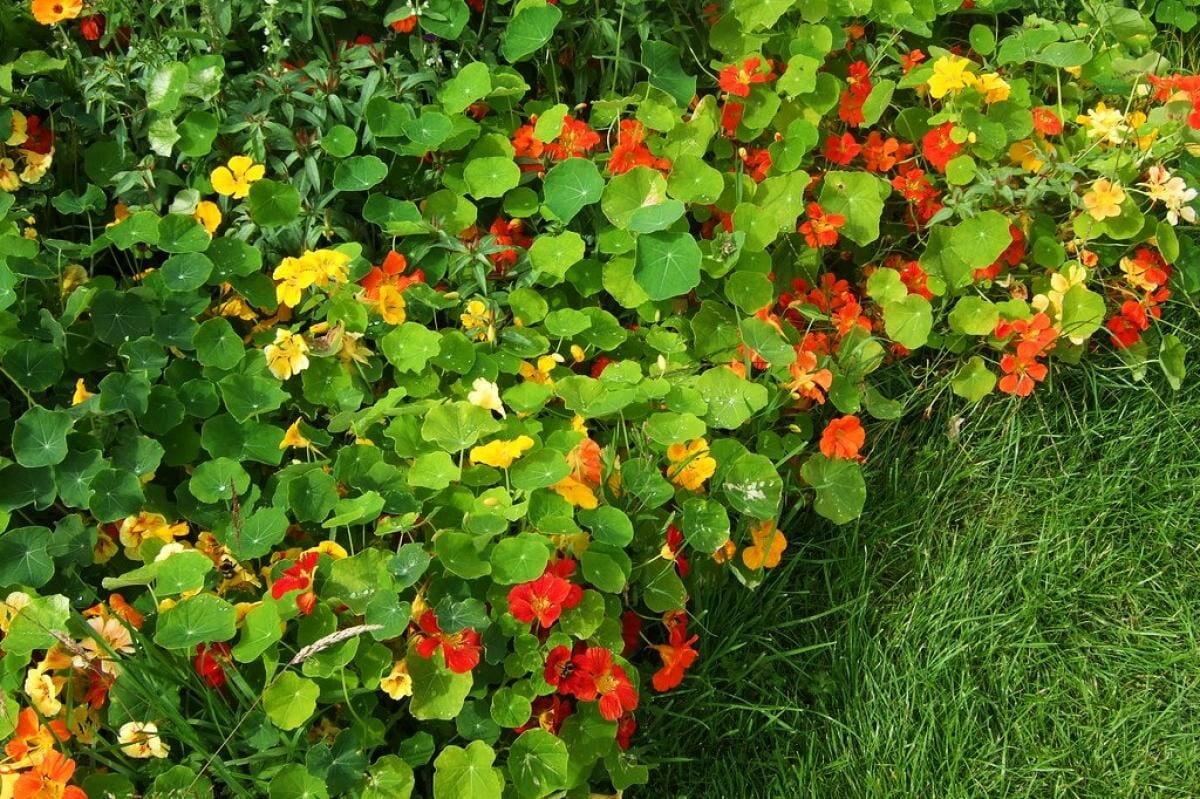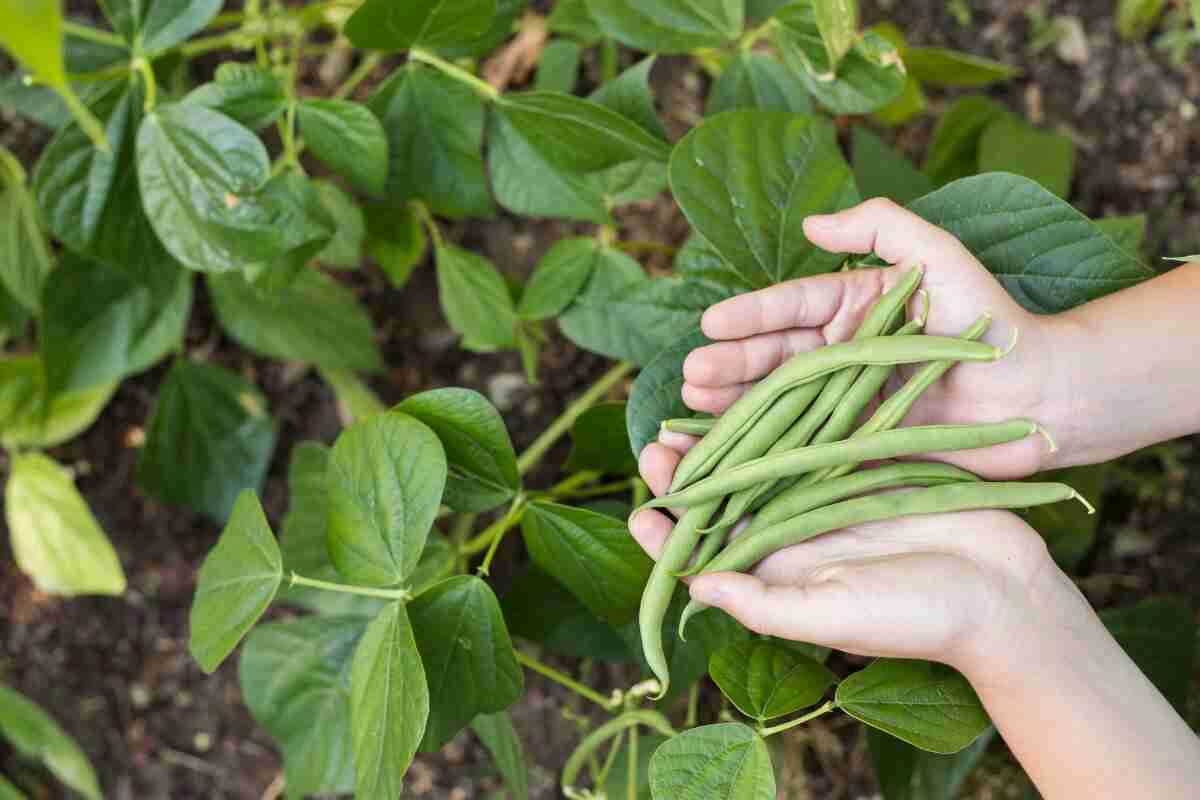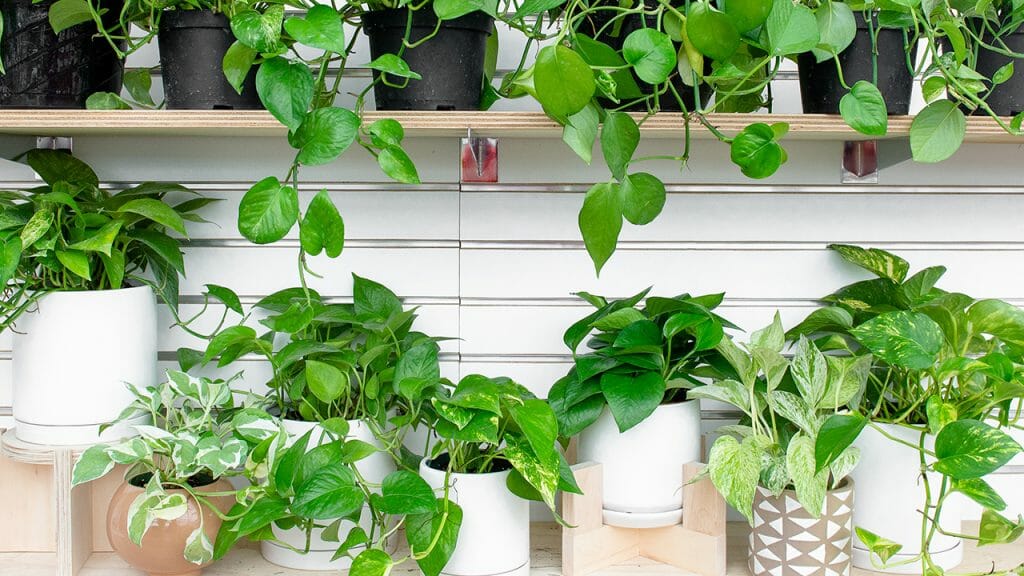Is there anything so satisfying as popping a fresh, homegrown raspberry into your mouth and experiencing a flavor explosion? We don’t think so.
However, before you go out and buy yourself your own raspberry plant to harvest, you might want to consider adding some companion plants to your shopping list.
Many plants can act as companion plants for raspberries, which bring their own benefits to the table. The plants that we have chosen to highlight are borage, nasturtiums, green beans, alliums, and chamomile.
But why use companion plants, you may ask. A few factors might motivate you to try giving your raspberry plants some friends. This can range from insect control to pollination and even enriching the soil. Each plant has its own special powers.
In this article, we’re going to delve into what raspberries need and how having companions by their side can make them grow at their best.
What are Raspberry Plants, and What Do They Need?
Raspberries are perennial fruiting shrubs with numerous cultivars. It is a very popular berry that is commercially grown all over the world. The berries can be used in breakfast, desserts, preserves, jams, and sauces.
Under the right conditions, these little bushes can produce hundreds of berries in a season, making them a very rewarding plant to grow for yourself. Not only do raspberries produce beautifully succulent fruit, but they also attract bees and butterflies, which are beneficial to every garden.
Let’s take a glance at the particulars of the raspberry plant:
| Specifications | |
| Genus | Rubus |
| Family | Rosaceae |
| Light | Full sun |
| Soil Type | Well drained, sandy loam soil |
| Watering | 1-2’’ per week |
As you can see, raspberries aren’t very fussy when it comes to their needs, but there are a few things like soil quality that can have a significant effect on your harvest.
Apart from this issue, fruit trees and bushes tend to attract several insects and birds, which can destroy your raspberry crop before you even get a taste.
Luckily, there is a solution for these issues that don’t involve additives or insecticides: companion plants.
What Are Companion Plants?
Before we get into which plants to grow with your raspberries, we must first understand what companion plants are.
Companion plants are plants that you purposefully pair with other plants in order for them to benefit from specific properties.
Some plants have natural insect-repelling properties that can protect your raspberries from getting damaged by some insects, while others attract helpful insects like bees and ladybugs. Using the right plants can deter insects like cabbage worms, cucumber beetles, and carrot flies, which can be highly destructive to fruiting plants.
However, not all of the benefits from companion plants can be seen above ground. Other plants help out their companions by affecting things that are happening in the soil. This could be by controlling soil-borne fungus to adding essential nutrients to the earth to help the plant grow strong and bear a lot of fruit.
Our recommendation, when deciding what companion plants to go for, is to choose plants that are useful in their own right. That way you can benefit from both the original plant and the companion plants that are helping it grow without wasting any precious garden bed space.
DON’T MISS: Learn which herbs can be planted together.
5 Companion Plants to Grow With Raspberries
Ok, now that we know what we are looking for, let’s get into this list of the raspberry plant’s best friends:
1. Borage
Borage is an edible herb with beautiful purple flowers. It is used across Europe for several purposes, including as a vegetable in Germany and Crete and as a flavoring in pickles in Poland. The flowers produce a very sweet nectar that bees use to make delicious honey.
Borage is a great companion plant because it attracts pollinators with its nectar-filled flowers. Raspberries are the kind of plants that rely on external pollinators like bees and ladybugs for pollination, so the more you can attract, the better!
2. Nasturtiums
Nasturtiums are a lovely and fragrant flowering plant with large orange blooms and delicate, round leaves. They aren’t just a pretty face; the leaves themselves are edible and can be used in salads or as a unique garnish for a dish.
We like pairing nasturtiums with raspberries because they are a natural insect repellant. They are what is known as a ‘trap crop,’ which is a plant that lures predatory insects away from nearby plants. They also have the ability to repel certain insects altogether.
3. Green Beans
I’m sure you are all well acquainted with green beans from home-cooked meals or holiday dinners, but did you know they also make a great companion plant?
Green beans help the raspberries by adding nitrogen to the soil. Nitrogen is vital for plants to grow; without it, they can’t make their own proteins, which makes it impossible to grow. By planting green beans, you can avoid adding nitrogen-rich fertilizer to the soil and, instead, do it naturally.
Growing these two fruiting plants side by side will also give you the chance to harvest beans for the main with raspberries for dessert, and isn’t that the self-sufficient dream?
4. Alliums
Alliums are a group of flowering plants that include garlic, shallots, onions, and chives. These are very useful ingredients used in everyday cooking, making them ideal for growing for yourself at home.
The thing that makes alliums so good as companion plants is their pungent smell. If any of you have ever been brought to tears by an onion, then you know what we are talking about! This scent acts as a natural insect repellant, especially against Japanese beetles.
5. Chamomile
Chamomile is a beautifully fragrant flowering plant that is just as useful as it is attractive. The flowers can be brewed as tea, used fresh in a salad, or as a floral flavoring in desserts.
Besides its flavor and scent, chamomile also releases a chemical into the soil that helps the plants around it grow faster and with a better harvest. Planting this flower in your vegetable garden is a no-brainer if you want plentiful fruit and vegetables.
Frequently Asked Questions:
Can you plant strawberries and raspberries together?
Raspberries and strawberries can be grown side by side in perfect harmony, especially when you are short on space in your veggie garden.
We suggest planting raspberry bushes towards the back of a bed, against a trellis, so you can start to trail the tendrils up it as they grow. Then you can plant strawberries in the front of the bed, and they can both benefit from the companion plants around them.
What can you not plant near raspberries?
While the companion plants that we mentioned today can really help our raspberry plants grow, there are some plants that we don’t recommend planting near them.
We recommend avoiding nightshades like eggplants and tomatoes because they are susceptible to blight and verticillium wilt, which could, in turn, affect the raspberries.
Another tip is to avoid planting similar berries like blackberries (learn when blackberries bloom here) or gooseberries nearby to avoid transferring soil-borne fungus.
Conclusion
Raspberries are an incredibly satisfying plant to grow, and giving them some growing companions will only enhance that experience.
With a little research and some strategic planting, you can increase your vegetable garden’s variety while protecting and enriching your precious raspberry plants.
We hope this has got your green fingers tingling and ready to add some companion plants to your own vegetable garden.









